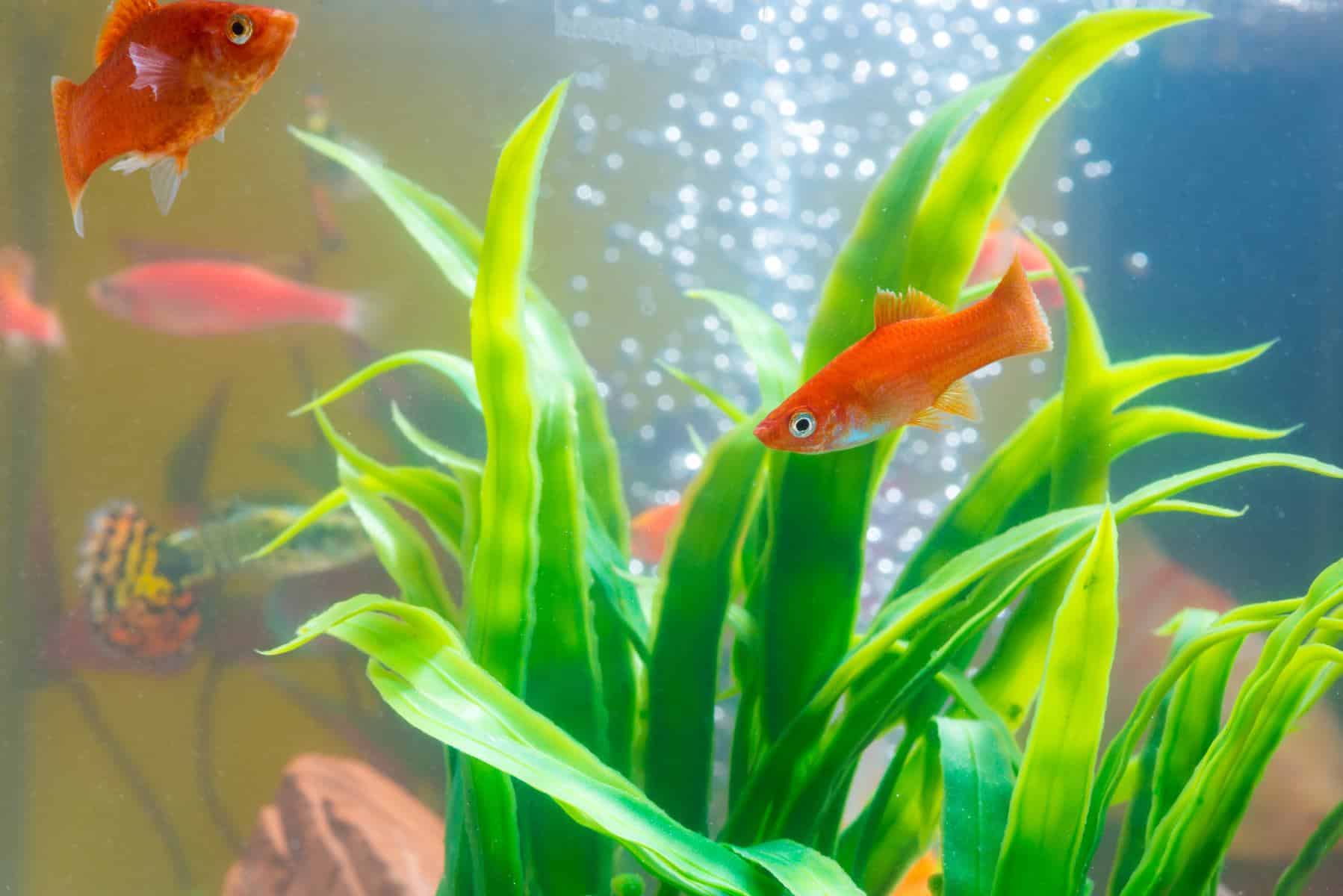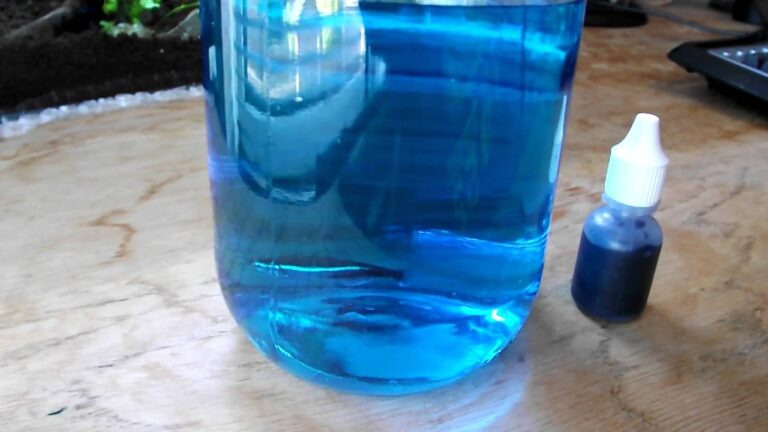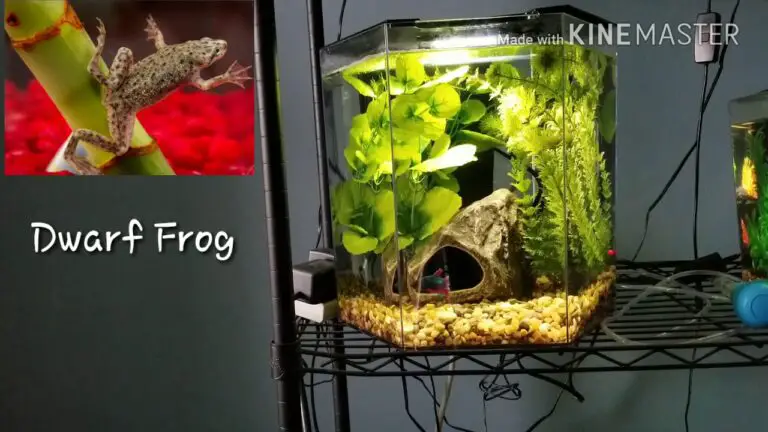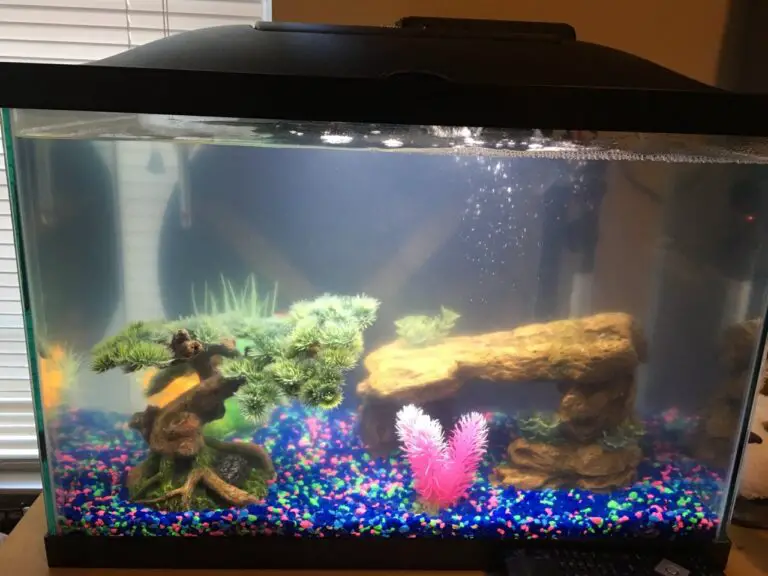How to Remove Ammonia from Fish Tank?
1. Do a water change of at least 25-50%, depending on how much ammonia is present in the tank.
Use a good quality dechlorinator to remove any chlorine from the new water and adjust it to the same temperature as your fish tank.
2. Install an activated carbon filter or chemical filtration media such as zeolite into your existing filter system to absorb the ammonia from the tank.
Change out these materials once every three weeks for best results.
3. Consider adding beneficial bacteria cultures in liquid form or live rocks/sand if you have an established aquarium.
That has been running for some time without cycling with fish food first to reduce high levels of ammonia faster than waiting for natural bacterial growth alone can achieve.
4. Feed your fish only very small amounts twice daily and remove any uneaten food immediately.
So that it doesn’t break down further and increase toxic levels of ammonia in your tank even more due to decomposition processes happening within its walls.
5. Monitor ammonium concentrations regularly using test strips or kits available online or at pet stores.
And make sure they remain consistently low (below 0,25ppm) before introducing new inhabitants into your aquarium environment.
- Perform a water change: Ammonia is most easily removed from your fish tank by performing a water change. This involves removing some of the old, contaminated aquarium water and replacing it with fresh, dechlorinated tap or spring water. The amount of water you should replace depends on the size of your tank but usually ranges between 10-50%.
- Utilize an ammonia filter media: Another way to remove ammonia from fish tanks is to use an ammonia filter media. Such as Purigen or Seachem Matrix which are designed specifically for this purpose. These products absorb and bind up toxins like ammonia so they can be safely filtered out of the aquarium over time.
- Add beneficial bacteria: Beneficial bacteria help break down nitrites and other toxins in your tank including ammonia. So adding these microorganisms (usually via an additive) can help reduce levels quickly and efficiently while also helping to keep them low in the long term as well.
- Use activated carbon: Activated carbon works great at removing both chlorine and chloramine from fish tanks. But it can also work wonders when it comes to reducing high levels of toxic chemicals like ammonia as well! Simply place a few bags inside your filter system for maximum effectiveness. Or if you’re using a hang-on-back style filter use one bag directly inside each compartment/chamber. That has room for it already built into its design no extra steps needed!
How to Remove Ammonia from Water Naturally?
Removing ammonia from water naturally can be achieved by using a combination of biological and physical methods.
Biological methods include the use of denitrifying bacteria, which convert ammonia to nitrates that are less toxic for aquatic life.
Physical processes such as filtration, aeration and adsorption can also help reduce ammonia levels in water.
Regular monitoring of both temperature and pH levels is necessary to ensure optimal results when attempting to remove ammonia from water naturally.
Signs of Too Much Ammonia in Fish Tank
High levels of ammonia in a fish tank can cause serious health problems for your fish, so it’s important to regularly monitor the ammonia levels in your tank.
Signs of too much ammonia include discolored gills, decreased appetite and activity level, erratic swimming behavior.
An increase in visits to the surface for air, or clamped fins. If you notice any of these signs.
It is important to test the water quality immediately and reduce the amount of waste that accumulates in your aquarium.
Can’t Get Rid of Ammonia in Fish Tank?
If you’re having trouble getting rid of ammonia in your fish tank, the first step is to test your water for levels of ammonia.
Ammonia can be removed from a tank with regular water changes and by using chemical filtration media such as activated carbon or zeolite.
Adding plants to the aquarium can help absorb some of the ammonia present in the water.
Lastly, make sure not to overfeed your fish since this will produce more waste and subsequently lead to higher levels of ammonia.
What Causes High Ammonia Levels in Fish Tank?
High ammonia levels in a fish tank can be caused by overfeeding, overcrowding, or an unbalanced ecosystem.
Ammonia is a toxic waste product that is released when fish excrete and release their nitrogenous wastes.
It is also produced when organic debris such as uneaten food or decaying plants decompose in the water.
If left unchecked, high ammonia levels can quickly lead to poor water quality and even death of your aquarium inhabitants.
To help prevent this from happening, it’s important to regularly test for ammonia levels and take corrective action if necessary.
How to Test for Ammonia in Fish Tank?
Testing for ammonia in a fish tank is an important part of maintaining water quality.
Ammonia can be tested using liquid test kits or strips, which measure the amount of ammonia present in parts per million (ppm).
These are available at most pet stores and aquarium supply shops.
It’s recommended to test weekly to make sure the levels remain low and safe for your fish.
How to Check Ammonia Levels in Fish Tank Without Kit?
If you don’t have a kit to measure the ammonia levels in your fish tank, there are other ways to check.
You can take a sample of the water and bring it to a pet store or aquarium store that offers testing services.
It may be helpful to also test the pH level of your tank’s water at this time as well.
Keep an eye on any changes in your fish’s behavior such as lethargy or loss of appetite; these could indicate higher than normal ammonia levels.
Signs of Ammonia in Fish Tank
If you detect a strong, pungent odor in your fish tank, it could be a sign that there is too much ammonia present.
Ammonia is a toxic gas produced by fish waste and uneaten food which can quickly accumulate to dangerous levels if not properly managed.
High levels of this toxin can cause stress and death in aquarium inhabitants.
So it’s important to monitor ammonia concentrations regularly and address any issues as soon as possible.
Look for signs such as changes in water clarity or discoloration, fish breathing heavily at the surface of the tank.
Or strange behavior from your aquatic friends to help identify an ammonia issue.
Ammonia Spike in New Tank
When setting up a new aquarium, it is essential to be aware of the potential for an ammonia spike.
Ammonia spikes occur when there is not enough beneficial bacteria present in the tank to break down waste products like fish waste, uneaten food, and decaying plants.
As a result of this lack of beneficial bacteria, toxic levels of ammonia can build up quickly in the water and cause harm or death to your fish.
To prevent this from happening, it’s important to make sure that you cycle your tank properly before introducing any fish into the system.

How Do I Lower the Ammonia Level in My Fish Tank Naturally?
Lowering the ammonia level in your fish tank naturally is essential to keeping healthy and happy aquatic life.
Ammonia can build up quickly in a home aquarium, leading to an unhealthy environment for the fish.
There are several natural methods you can use to reduce levels of this toxic chemical.
The most effective way is by setting up a proper filtration system with biological media designed specifically to break down ammonia into less harmful byproducts such as nitrite and nitrate.
Regular water changes will help remove excess organic matter that contributes to high ammonia levels while adding fresh oxygenated water back into the tank which helps beneficial bacteria thrive.
Finally, adding live plants like Java Moss or Anubias Barteri can also assist in reducing ammonia levels as they act as natural filters and absorb some of the toxins from the water column.
With these simple steps, you should have no problem maintaining low ammonia levels for your aquarium inhabitants!
What Breaks down Ammonia in Fish Tank?
Ammonia is a byproduct of fish waste, and if left unchecked it can build up to levels that are toxic for your fish.
Fortunately, there are several ways to break down ammonia in your aquarium.
The most common solution is to introduce beneficial bacteria into the tank through the use of filter media or special bacterial additives.
These colonies will consume ammonia as their food source, converting it into less harmful compounds such as nitrates and nitrites.
Regular water changes help remove some of the dissolved ammonia from your tank before it has a chance to reach dangerous levels.
Lastly, live aquatic plants act as natural filters that can absorb some of the excess nutrients like ammonia which helps an established aquarium ecosystem.
What Causes High Ammonia in Fish Tank?
High ammonia levels in fish tanks can be a serious issue that needs to be addressed quickly.
Ammonia is a toxic compound that is produced as waste from decaying organic matter, such as uneaten food and fish excretions.
As the concentration of ammonia increases, it becomes increasingly more harmful to your fish’s health.
Leading to stress and eventual death if left unchecked, it’s important for aquarium owners.
To understand what causes high ammonia levels in their tanks so they can take steps towards correcting the problem before it gets out of hand.
The two main culprits behind elevated ammonia levels are overfeeding and overstocking.
Both of which can cause an accumulation of organics in your tank that will break down into ammonia.
Insufficient water changes or using tap water with high concentrations of nitrates or chloramines can also contribute to increased concentrations of this toxin.
Finally, certain types of substrates may have high ammonium content which slowly leaches into the tank water; these should always be tested prior to use!
Can Fish Recover from Ammonia?
Yes, fish can recover from ammonia exposure. Ammonia is toxic substances to aquatic life and can cause significant damage.
If it builds up in an aquarium or water supply. However, with proper water management and regular testing.
It’s possible for fish to make a full recovery following an ammonia spike.
The main thing that needs to be done is reducing the amount of ammonia present in the tank or water body so that no further damage occurs.
This requires regular testing for ammonia levels and performing partial water changes as needed to maintain healthy conditions.
Using filter media specifically designed to remove toxins s ammonia from aquariums can help reduce levels quickly without causing any harm to your fish.
With these methods in tandem, your fish should have a good chance of making a full recovery!
Conclusion
Removing ammonia from a fish tank can seem like an intimidating task.
But with some simple steps and the right supplies it is possible to reduce or even eliminate the presence of ammonia in your aquarium.
By regularly testing for ammonia levels, doing partial water changes as needed.
And using biological filtration media you can keep your tank healthy and ensure that your fish enjoy a long life.
With these tips, removing ammonia from your fish tank will not be so difficult after all!




